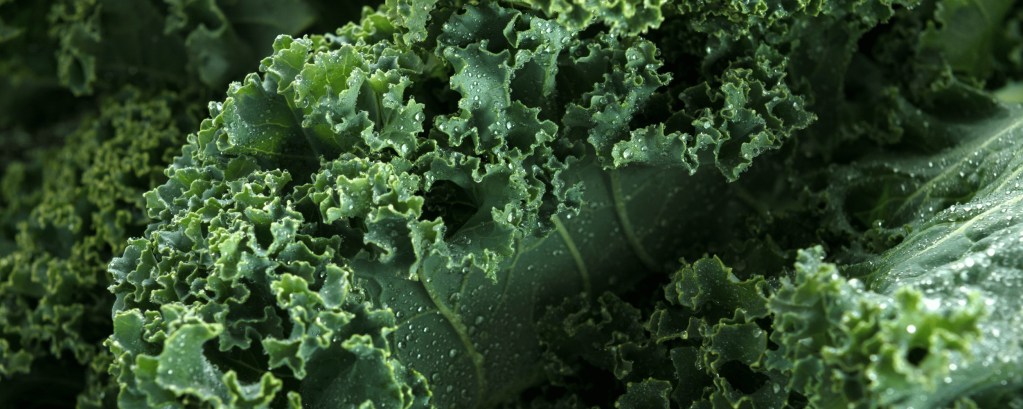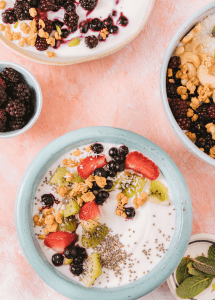Science 101: Nutrition

Step into the world of nutrition, where the landscape for what constitutes a “healthy diet” is ever changing. Nutrition isn’t just about numbers and diets; it’s a journey that weaves science, taste, and well-being in a way that can often feel complex and nuanced. In this article, we’ll explore the science of nutrition, the impact it has on our bodies, and attainable ways to cultivate balanced nutrition in our everyday lives. So grab your fork and get ready to explore the universe of nutrition – where food isn’t just sustenance, but a delightful adventure for your body and soul!
The Basics of Nutrition Science
To put it simply, a healthy diet is one in which macronutrients are consumed in appropriate quantities to meet the energy requirements of the body while also providing sufficient micronutrients and hydration to meet physiological needs. Below is a breakdown of these two major dietary components:
Macronutrients
Macronutrients such as proteins, carbohydrates, and fats, are the main nutrients our bodies need to produce energy. These nutrients are the fundamental building blocks of life and are derived from the foods we consume. Let’s take a closer look at these macronutrients below:
- Protein: Proteins play a pivotal role in building and maintaining our muscles which becomes especially important as we age. [1] Proteins are made up of amino acids; the body can create some amino acids, but there are nine essential ones that we must get from our diet. Lean meats, fish, dairy, beans, and nuts are go-to sources of protein. [2]
- Carbohydrates: Our bodies run on carbohydrates. Carbohydrates are like fuel stations, providing the energy needed for every action, from sprinting to simply blinking! Grains, fruits, vegetables, and legumes are prime sources of carbohydrates, and carbs can either be complex (releasing energy slowly) or simple (releasing energy in quick bursts). [3]
- Fat: Often unfairly villainized, fats are the stealthy sustainers that keep our bodies satiated. Like skilled artisans, fats construct cell membranes and manufacture hormones. Avocados, nuts, seeds, and olive oil offer healthy sources of fat. [4]
Micronutrients
 Micronutrients are often referred to as vitamins and minerals. These superheroes ensure that every cellular process hums like a well-oiled machine. They are vital to healthy development, supporting our immune system and overall well-being. The shift from whole foods to processed foods in modern Western diets has reduced our ability to get adequate micronutrients, and with the exception of Vitamin D, micronutrients are not produced in the body and need to be derived from our diets. [5] Below are some examples of important micronutrients:
Micronutrients are often referred to as vitamins and minerals. These superheroes ensure that every cellular process hums like a well-oiled machine. They are vital to healthy development, supporting our immune system and overall well-being. The shift from whole foods to processed foods in modern Western diets has reduced our ability to get adequate micronutrients, and with the exception of Vitamin D, micronutrients are not produced in the body and need to be derived from our diets. [5] Below are some examples of important micronutrients:
Zinc: Zinc supports a healthy immune system, wound healing, and even reproductive health. [6] Globally, 17.3% of the population is at risk for zinc deficiency due to inadequate diets. [7] Some sources of zinc include oysters, red meat, and pumpkin seeds.
Selenium: Selenium is a powerful antioxidant that helps protect cells, supports thyroid function, and plays a role in immune health. [8] Eating just one or two Brazil nuts per day would fulfill your daily selenium requirement!
Iron: Iron is essential for transporting oxygen in your blood and supporting energy production. Iron deficiency is a leading cause of anemia, a condition where the blood has a reduced oxygen-carrying capacity to meet the demands of the body, and about one-fourth of the world’s population is affected by anemia. [9] Iron is present in red meat as well as some plant foods like spinach, tofu, and pumpkin seeds.
The Influence of Nutrition on Key Body Systems
Nutrition plays a fundamental and irreplaceable role in the well-being of the human body, so it’s no surprise that nutrition impacts all of our bodily systems. While there are many systems we can discuss, in this section we will focus on three key areas: gut health, brain health, and the immune system.
Gut Health
 Gut health is a buzzword these days, and for good reason! There is almost no function in the body that our gut-dwelling microbes are not connected to. From our digestive system to heart health to immune function, our microbes are constantly hard at work breaking down the food we eat to produce important byproducts like short-chain fatty acids, which fuel the cells lining our colon and strengthen our protective intestinal lining. A strong gut can prevent harmful substances from leaking into the bloodstream. Additionally, the health of our gut can be influenced by the foods we eat. It’s important to be mindful of how eating gluten, dairy, soy, refined sugars, red meat, caffeine, and alcohol affects you. While everyone may tolerate these dietary components at various levels, they all have the ability to negatively impact the gut microbiome by promoting the growth of harmful bacteria and reducing the diversity of beneficial microbes. Below are some examples of foods that are beneficial to our gut health:
Gut health is a buzzword these days, and for good reason! There is almost no function in the body that our gut-dwelling microbes are not connected to. From our digestive system to heart health to immune function, our microbes are constantly hard at work breaking down the food we eat to produce important byproducts like short-chain fatty acids, which fuel the cells lining our colon and strengthen our protective intestinal lining. A strong gut can prevent harmful substances from leaking into the bloodstream. Additionally, the health of our gut can be influenced by the foods we eat. It’s important to be mindful of how eating gluten, dairy, soy, refined sugars, red meat, caffeine, and alcohol affects you. While everyone may tolerate these dietary components at various levels, they all have the ability to negatively impact the gut microbiome by promoting the growth of harmful bacteria and reducing the diversity of beneficial microbes. Below are some examples of foods that are beneficial to our gut health:
Fiber: Dietary fiber plays a crucial role in promoting healthy digestion, preventing constipation, and supporting a balanced gut microbiome. It has been reported that only 5% of Americans meet the recommended dietary fiber intake, which ranges from 19 to 38 grams per day. [10] Just a single cup of raspberries packs a whopping 8 grams of fiber!
Fermented foods: Fermented foods like yogurt, kimchi, kombucha, and sauerkraut are rich in good bacteria like lactobacilli to support microbiome function while decreasing disease-causing bacteria like enterobacteriaceae, which is often present in chronic inflammatory conditions.
Polyphenols: Polyphenols are micronutrients that occur in plants and are converted by microbiota in the body into biologically active compounds that support and protect your body. Some examples of polyphenols include herbs and spices, berries, tea, flaxseeds, nuts, cocoa powder, olives, fruits, and vegetables.
Brain Health
 Think back to a time when you went too long without eating – you might have felt sluggish and unable to concentrate. This is because the brain is the command center of the body, and like any high-performing machine, it needs the right fuel to perform efficiently. Carbohydrates in the form of glucose are the main source of energy for the brain, and other nutrients like essential amino acids from proteins (found in sources like lean meats, fish, eggs, and legumes) are the building blocks of neurotransmitters. Neurotransmitters are chemical messengers that play a vital role in mood regulation, cognitive function, and overall mental well-being. Below are some other key nutrients for the brain:
Think back to a time when you went too long without eating – you might have felt sluggish and unable to concentrate. This is because the brain is the command center of the body, and like any high-performing machine, it needs the right fuel to perform efficiently. Carbohydrates in the form of glucose are the main source of energy for the brain, and other nutrients like essential amino acids from proteins (found in sources like lean meats, fish, eggs, and legumes) are the building blocks of neurotransmitters. Neurotransmitters are chemical messengers that play a vital role in mood regulation, cognitive function, and overall mental well-being. Below are some other key nutrients for the brain:
Omega-3 fatty acids: These healthy fats act as brain boosters, enhancing cognitive function and potentially reducing the risk of cognitive decline. They also promote healthy brain cell membranes and support communication between brain cells. Fatty fish like salmon, walnuts, hemp seeds, flaxseeds, and chia seeds are excellent sources of Omega-3 fatty acids.
Antioxidants: Antioxidants act as protective shields for your brain cells, defending them against oxidative stress and inflammation. Vitamins C and E, as well as compounds like flavonoids found in fruits and vegetables, act as potent antioxidants; in fact, blueberries are often called “brain berries” because they are packed with antioxidants that have been linked to improved brain function and memory! [11]
B Vitamins: B Vitamins, particularly B6, B9 (folate), and B12, play crucial roles in brain health. They are involved in neurotransmitter synthesis, DNA repair, and the maintenance of nerve cells. Leafy greens, legumes, whole grains, and animal products are rich sources of B vitamins. [12]
Hydration: Staying hydrated is essential for optimal cognitive performance. Even mild dehydration can impair attention, memory, and mood. Adequate water intake supports neurotransmitter production and facilitates nutrient transport to brain cells. [13]
Immune Health
 Many of us already know that nutrition can impact our immune system, but did you know that excessive added sugar consumption may weaken the immune system and make the body more susceptible to infections? Studies show that excessive sugar consumption is associated with a gradual increase in the biomarkers of inflammation in the body as well as increased visceral adipose tissue and intestinal bacterial overgrowth [14], which is why it’s so important to have moderation in our diets and to consume foods that offset those “cheat days”. Below are some nutrients that can support our immune system:
Many of us already know that nutrition can impact our immune system, but did you know that excessive added sugar consumption may weaken the immune system and make the body more susceptible to infections? Studies show that excessive sugar consumption is associated with a gradual increase in the biomarkers of inflammation in the body as well as increased visceral adipose tissue and intestinal bacterial overgrowth [14], which is why it’s so important to have moderation in our diets and to consume foods that offset those “cheat days”. Below are some nutrients that can support our immune system:
Vitamin C: A water-soluble vitamin that is also known as ascorbic acid, Vitamin C helps protect the cells from damage caused by free radicals, which are formed when our bodies convert food to energy. Vitamin C also helps with the absorption of iron, and helps the immune system work properly to fight off disease. While Vitamin C can not prevent the common cold, it may help shorten the duration of a cold and help with symptoms. [15] A cup of red bell peppers can contain up to three times more vitamin C than an orange!
Vitamin D: This is a fat-soluble vitamin that helps our bodies absorb calcium for strong bones, and it may also play a role in reducing inflammation in the body and modulating processes like cell growth and immune system function. Vitamin D is present in some foods, like eggs, dairy, and mushrooms, but is also produced in the body when the skin is exposed to ultraviolet sunlight. [15]
Broccoli: Broccoli contains a compound called sulforaphane, which may have protective effects against neurodegenerative diseases and neutralize toxins in the body. Sulforaphane activates the Nrf-2 pathway in the body which triggers the release of cellular defense mechanisms. Specifically, broccoli sprouts contain more of this nutrient compared to mature broccoli. [16]
Cultivating Balanced Daily Nutrition
Building a balanced nutrition plan involves considering a variety of nutrients, portion sizes, and individual dietary needs. Here’s a step-by-step guide to help you create a well-rounded and personalized nutrition plan:
1. Set Your Goals and Consider Your Needs
Determine your goals: Are you aiming for weight loss, muscle gain, improved energy, or overall health? Your goals will shape your nutrition plan.
Consider your lifestyle: Take into account your activity level, daily schedule, dietary preferences, and any health conditions.
2. Choose Nutrient-Rich Foods
Include a variety of foods from all food groups at every meal:
 Fruits and vegetables for vitamins, minerals, and antioxidants: According to the Centers for Disease Control (CDC) in 2019, only 12.3% and 10.0% of surveyed adults met fruit and vegetable intake recommendations, respectively. The guidelines recommend 1.5-2 cups of fruits and 2-3 cups of vegetables per day. [17] The best way to get vitamins and minerals is through eating the rainbow! Naturally occurring phytonutrients are what give fruits and vegetables their vibrant colors, and the more variety you get of the color spectrum in your diet, the more likely you are to be properly nourishing your body.
Fruits and vegetables for vitamins, minerals, and antioxidants: According to the Centers for Disease Control (CDC) in 2019, only 12.3% and 10.0% of surveyed adults met fruit and vegetable intake recommendations, respectively. The guidelines recommend 1.5-2 cups of fruits and 2-3 cups of vegetables per day. [17] The best way to get vitamins and minerals is through eating the rainbow! Naturally occurring phytonutrients are what give fruits and vegetables their vibrant colors, and the more variety you get of the color spectrum in your diet, the more likely you are to be properly nourishing your body.
Choose healthy carbohydrates: Opt for whole grains like brown rice, quinoa, and whole wheat for fiber and sustained energy. Processed grains like white flour are stripped of germ and bran during the milling process, resulting in lower amounts of fiber and micronutrients. [1]
Lean protein sources such as poultry, fish, beans, tofu, and low-fat dairy: The Recommended Dietary Allowance (RDA) for protein is currently 0.8 grams of protein per kilogram of body weight for a healthy adult with minimal activity levels. For individuals with more intense physical activity or those who want to build muscle, 1-1.6 grams of protein per kilogram of body weight may be appropriate. [18] Just one cup of cooked lentils has 18 grams of protein.
Healthy fats like avocados, nuts, seeds, and olive oil for brain and heart health: Omega-3 fatty acids, in particular, eicosapentaenoic acid (EPA), and docosahexaenoic acid (DHA), have been studied for their potential health benefits, which may include protecting the heart, preventing cognitive decline, reducing inflammation, and even sustaining muscle mass. [1]
3. Prioritize Portion Control
Be mindful of portion sizes to avoid overeating. A balanced plate often follows the “Plate Method”:
- Fill half your plate with non-starchy vegetables like broccoli, asparagus, and carrots.
- Allocate a quarter of your plate to lean protein.
- Reserve a quarter for whole grains or starchy vegetables like sweet potatoes and peas. [19]
Lifestyle Tips to Improve Nutrition
Just like with anything in life, there is no easy fix to improving nutrition – however, small changes over time can lead to long-term success! Here are a few simple lifestyle tips that may help you along your nutrition journey:
Boost your hydration: Keep a reusable water bottle around to drink plenty of water throughout the day. Water supports digestion, circulation, and overall bodily functions.
Plan Meals and Snacks: Plan ahead to avoid relying on unhealthy options when you’re hungry:
- Prepare balanced meals that include a protein source, vegetables, and whole grains. Plus, save money while eating at home!
- Have healthy snacks like Greek yogurt, fruit, nuts, or cut veggies readily available. Nutrient-dense snacks can help you stay fuller for longer. [19]
Listen to Your Body: Pay attention to hunger and fullness cues. Eat when you’re hungry and stop when you’re satisfied, not overly full.
Be Flexible: Allow room for occasional treats or meals that may not perfectly align with your plan. It’s about balance over the long term.
Monitor and Adjust: Keep track of your progress and how you feel. If necessary, make adjustments to your plan based on your results and changing goals.
The Takeaway…
Remember, building a balanced nutrition plan is not about strict rules, but about nourishing your body in a way that suits your needs, preferences, and goals. If you have specific health concerns or dietary restrictions, consider consulting a registered dietitian or healthcare professional for personalized guidance. For more nutrition information, be sure to check out our Nutrition Primer!
Sources:
[1] Cena H, Calder PC. Defining a Healthy Diet: Evidence for the Role of Contemporary Dietary Patterns in Health and Disease. Nutrients. 2020;12(2):334. doi:10.3390/nu12020334
[2] Avenue 677 Huntington, Boston, Ma 02115. Protein. The Nutrition Source. Published September 18, 2012. Accessed August 4, 2023. https://www.hsph.harvard.edu/nutritionsource/what-should-you-eat/protein/
[3] Avenue 677 Huntington, Boston, Ma 02115. Carbohydrates. The Nutrition Source. Published September 18, 2012. Accessed August 4, 2023. https://www.hsph.harvard.edu/nutritionsource/carbohydrates/
[4] Avenue 677 Huntington, Boston, Ma 02115. Fats and Cholesterol. The Nutrition Source. Published September 18, 2012. Accessed August 8, 2023. https://www.hsph.harvard.edu/nutritionsource/what-should-you-eat/fats-and-cholesterol/
[5] Tardy AL, Pouteau E, Marquez D, Yilmaz C, Scholey A. Vitamins and Minerals for Energy, Fatigue and Cognition: A Narrative Review of the Biochemical and Clinical Evidence. Nutrients. 2020;12(1):228. doi:10.3390/nu12010228
[6] Nasiadek M, Stragierowicz J, Klimczak M, Kilanowicz A. The Role of Zinc in Selected Female Reproductive System Disorders. Nutrients. 2020;12(8):2464. doi:10.3390/nu12082464
[7] CDC. Micronutrient Facts. Centers for Disease Control and Prevention. Published February 1, 2022. Accessed August 31, 2023. https://www.cdc.gov/nutrition/micronutrient-malnutrition/micronutrients/index.html
[8] Office of Dietary Supplements – Selenium. Accessed August 11, 2023. https://ods.od.nih.gov/factsheets/Selenium-HealthProfessional/
[9] Sun H, Weaver CM. Decreased Iron Intake Parallels Rising Iron Deficiency Anemia and Related Mortality Rates in the US Population. J Nutr. 2021;151(7):1947-1955. doi:10.1093/jn/nxab064
[10] Quagliani D, Felt-Gunderson P. Closing America’s Fiber Intake Gap. Am J Lifestyle Med. 2016;11(1):80-85. doi:10.1177/1559827615588079
[11] KRIKORIAN R, SHIDLER MD, NASH TA, et al. Blueberry Supplementation Improves Memory in Older Adults. J Agric Food Chem. 2010;58(7):3996-4000. doi:10.1021/jf9029332
[12] Kennedy DO. B Vitamins and the Brain: Mechanisms, Dose and Efficacy—A Review. Nutrients. 2016;8(2):68. doi:10.3390/nu8020068
[13] Armstrong LE, Ganio MS, Casa DJ, et al. Mild Dehydration Affects Mood in Healthy Young Women1,2. J Nutr. 2012;142(2):382-388. doi:10.3945/jn.111.142000
[14] Della Corte KW, Perrar I, Penczynski KJ, Schwingshackl L, Herder C, Buyken AE. Effect of Dietary Sugar Intake on Biomarkers of Subclinical Inflammation: A Systematic Review and Meta-Analysis of Intervention Studies. Nutrients. 2018;10(5):606. doi:10.3390/nu10050606
[15] Vitamin and Mineral Supplement Fact Sheets. Accessed August 9, 2023. https://ods.od.nih.gov/factsheets/list-VitaminsMinerals/
[16] Fahey JW, Zhang Y, Talalay P. Broccoli sprouts: an exceptionally rich source of inducers of enzymes that protect against chemical carcinogens. Proc Natl Acad Sci U S A. 1997;94(19):10367-10372. doi:10.1073/pnas.94.19.10367
[17] Lee SH. Adults Meeting Fruit and Vegetable Intake Recommendations — United States, 2019. MMWR Morb Mortal Wkly Rep. 2022;71. doi:10.15585/mmwr.mm7101a1
[18] Wu G. Dietary protein intake and human health. Food Funct. 2016;7(3):1251-1265. doi:10.1039/c5fo01530h
[19] Gamble J. Why Nutrition Matters in Healthcare Outcomes. Ochsner J. 2008;8(2):61-64. https://www.ncbi.nlm.nih.gov/pmc/articles/PMC3096357/